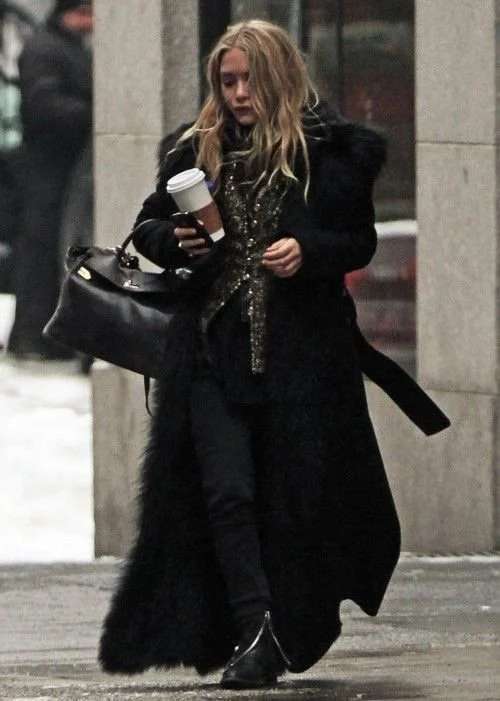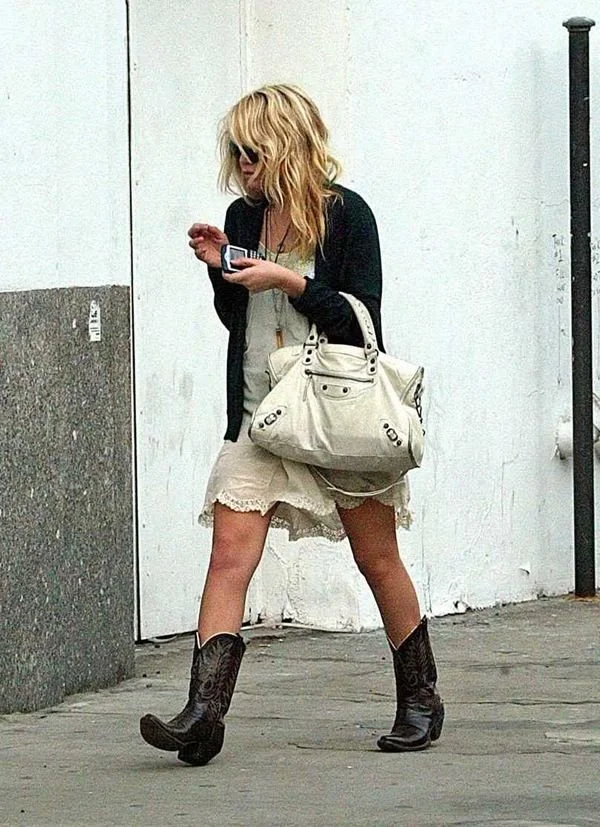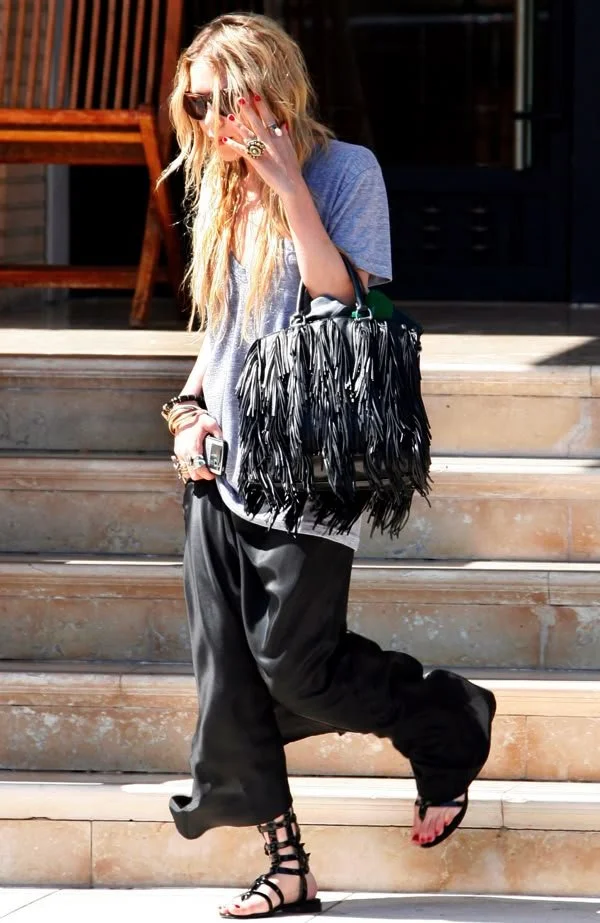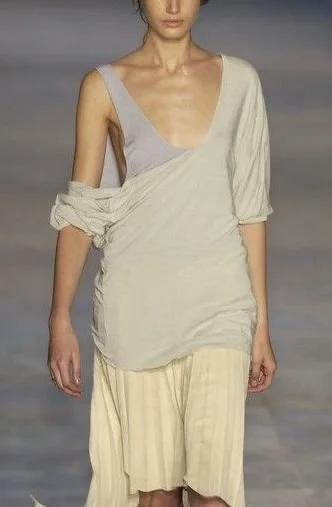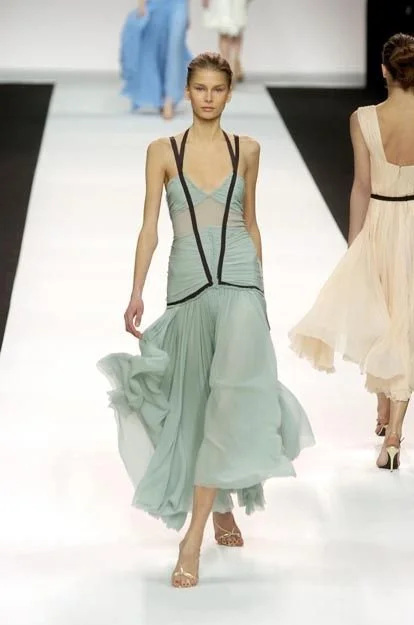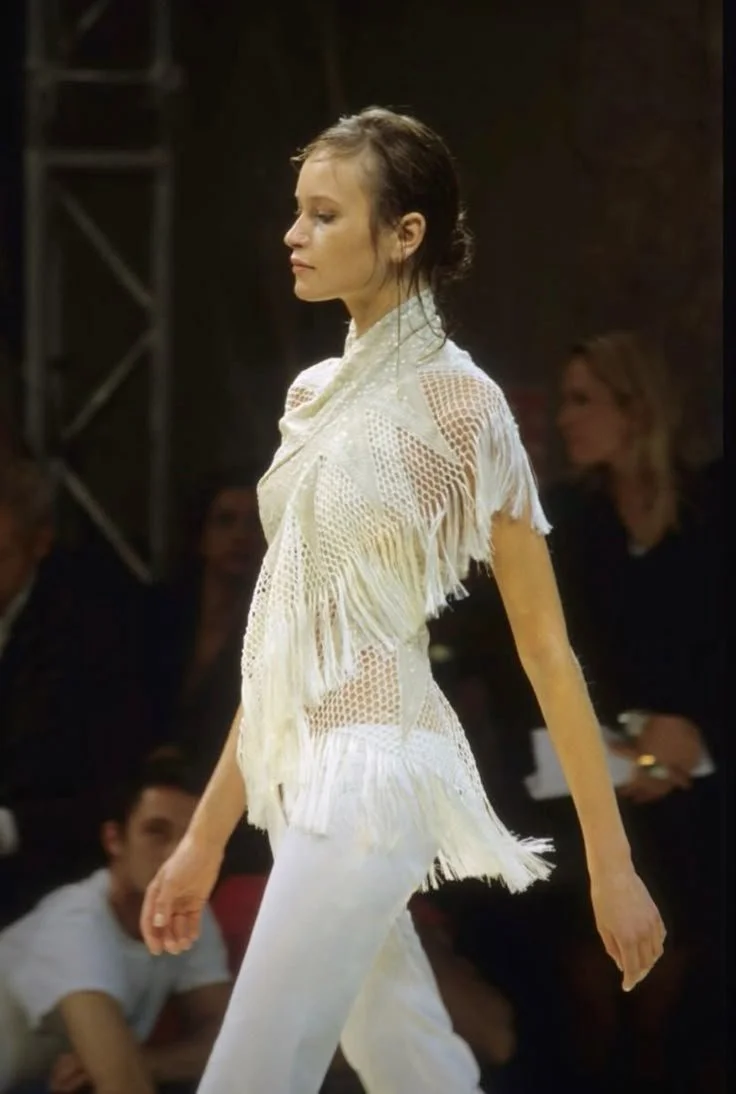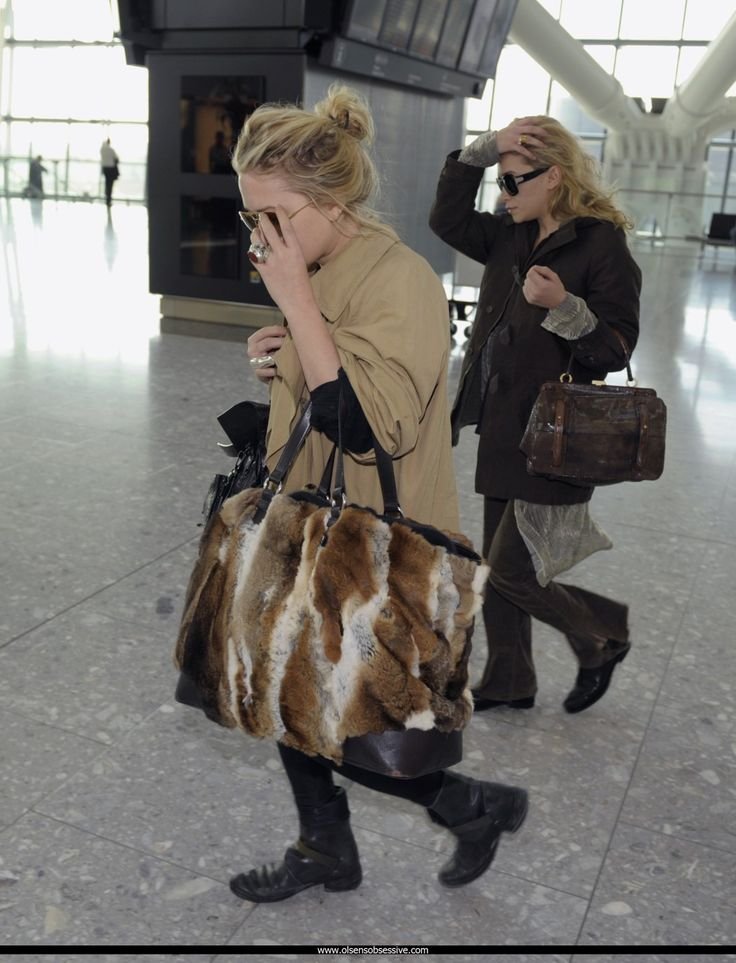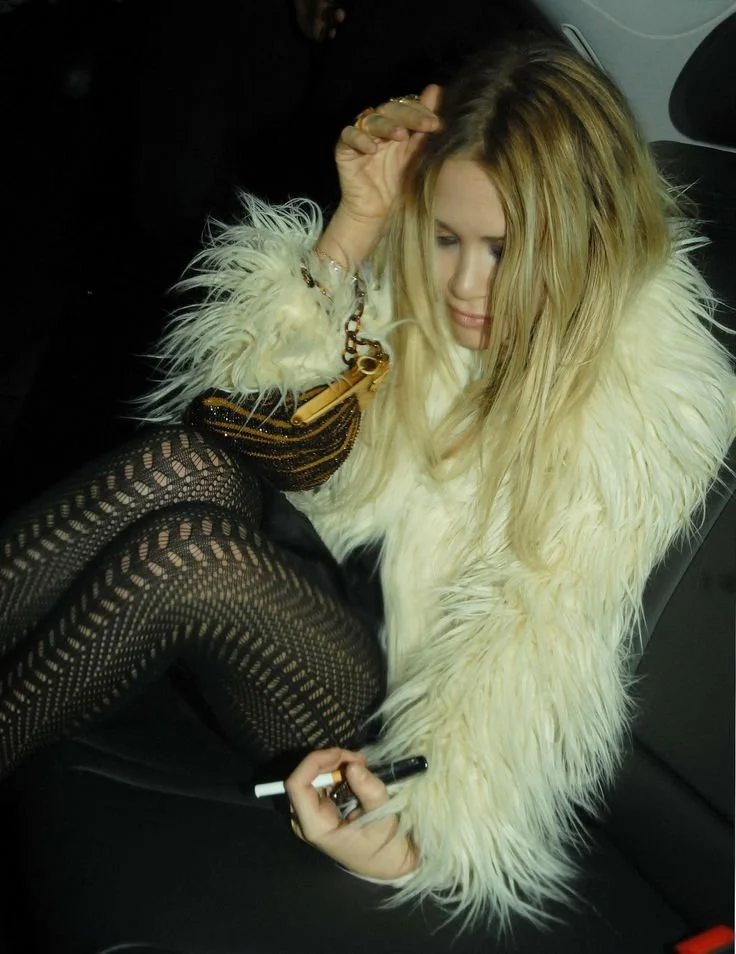The Olsen Twins: The Last of Boho
I write this as I sit amongst the usual chaos of my room; white linen dresses, turquoise beaded necklaces, beaten up ballet flats and scuffed leather bags adorn every surface and hanging place. Despite the mess, there’s a specific cultivation to my wardrobe that while seeming boho in appearance, actually exists to defy the very notion of what it means to truly be so.
Kind of ‘this isn’t a pipe, but an image of a pipe’ coded...
See, while giving the illusion of bohemia in its eclectic nature and being mostly a little worn, threadbare, and always second hand; my style is carefully considered in direct inspiration by the Olsen Twins. There, I said it. But realistically, what twenty-something style conscious girl doesn’t take inspiration from this duo?
The term bohemian first emerged in 19th-century France, and not as a fashion descriptor but as a cultural term for artists, writers and creatives who lived outside the confinements of bourgeois society.
‘Boho’ as worn by the Olsen Twins, think 2005-2010, wan’t the origin of bohemian style - but perhaps, its most resonant revival in the 21st century and what I believe may be the last true representation of it. No, they weren’t simply layering scarves and slouchy bags for the sake of it; their bohemia was a quiet ode to the true countercultural spirit. Like the free spirits and creatives of the 1960s and 70s, their approach to style suggested and required a certain movement that was both physical and emotional. Oversized silhouettes, layered jewellery, dark sunglasses to shield them from the overexposure of fame. It wasn’t a mere reference to boho, but it was a true feeling of the sense of what this meant. It lay at the intersection of the freedom in mess and living, and a certain privacy and rejection of overtness, a refusal to polish or perform or explain. This is why it worked: it was instinctive and lived in.
To be boho in fashion, in its purest form, isn’t simply about mixing prints or loving tassels. Boho at the core of itself is concerned, or actually very much unconcerned, by emotional texture. There is a certain meta-meaning that tells a story about living and breathing in your style. Garments are loved and worn and lived in, existing as extensions of the self as a cultural and social vehicle.
The ever-on-the-mark Rian Phin (@thatadult) discusses the merciless ‘authenticity wars’ raging online. There is an air of desperation, a distinct scrabbling, that we demonstrate in virtue signalling through vintage finds and distinctly stylised ‘lived in’ looks. We often don’t really care if people believe our style to be authentic, just as long as it is the charade of seeming to be.
Yet the Olsen twins? They weren’t playing our familiar game. Their style was a quiet refusal to stylise themselves in contrived efforts. It was, and continues to be in privacy, a graceful act of symbiosis, co existing and breathing into their clothing. Think wine-stained Balenciaga, over-worn Hermes - not because it was a statement, but simply because it was real. As Rian Phine perfectly summarises: ‘the only way to win authenticity is not to know the game’. Famously elusive, the Olsens didn’t know the game... or maybe they simply refused to play on it’s terms.
And now, I wonder how this kind of effortless undoing of style can ever be achieved in the over polished and saturated realm of social media.
Take Phoebe Philo’s era at Chloe. It didn’t just look bohemian, it also moved like it. Her silhouettes draped, not clung. Her palettes softened rather than popped. Her clothing whispered of sensuality, intellect and effortlessness but were worn to not prove too much. There was a sense of invisibility to her collections, swathing the body instead of exposing it for consumption and judgement. Not to disappear as if out of shame or shyness, but a graceful refusal to perform.
This is an important point: boho style requires a freedom of movement and mind. Philo’s tenure at Chloe is only truly recognised when its fluidity is observed on runway, or its cultural presence in its ability to be worn is noted. Boho style is best understood not in stills or street shots or social media, and instead in the glide of fabric and the quiet command it holds when actually worn and lived in.
The Olsen twins embodied this success of the boho revival: their looks weren’t ‘boho chic’ in today’s sense of manufactured distressed knits or peasant skirts or aged-look leather. They were layered, slouchy, and smudged with real life.
As Rian Phin explains, sincerity in fashion can’t be crafted under pressure. Indeed, the Olsen Twins and Philo’s Chloe felt immune to the stifling social commentary of paparazzi and trying-too-hard. It was the free-flowing nature that allowed their styles to be their most organic and evolved. Their styles weren’t ever supposed to be memes, but moods. Their outfits weren’t aesthetics, but affective.
Despite it’s popularity today, Boho won’t ever be able to be truly revived. We buy the pre-damaged garments and bags with pre-made charms all as calculated efforts to mimic the passage of time and the lived-in nature of boho without having to invest ourselves too much to what is actually a fleeting trend. No, Boho isn’t being revived - it is being appropriated and used as a costume to perform a currently trending ideal. It is a play at being known to ourselves and by others, with none of the emotional wear.
In it’s truest form, Boho is a subversion - a soft rebellion against the glossy and plastic perfection often rewarded in fashion. It is for the wanderer, the outsider, the free thinker, and the creative. Crucially, it has never demanded approval. It doesn’t exist to sell the dream of beauty; it wears it with wrinkles, loose threads, textures and tangled necklaces.
This is where the tension lies: the war of the squeaky-clean instagram grid, the influencer minimalism, and the freedom of bohemia. Social Media demands for identity to fit neatly in the frame. But real boho has always overflowed at the edges. It avoids the photograph, it suffocates in stillness, it happens entirely in motion. It is fabric slipping off the shoulder, fingers adorned in too many rings, scarves and hair as one, scuffed boots and stained handbags.
And Rian Phin, again, brings clarity here as she discusses how ‘authenticity’ is now just another mode of performance. Messiness, softness, even intellectualism have all been weaponised as trends too. And yet, in all that noise, what’s lost is depth.
Harper’s Bazaar and Vogue continue to try and locate this loss, suggesting that boho once stood in opposition to fast fashion’s homogenising grip. They track its historical roots to anti-fashion, to counterculture, to a desire for self-expression over spectacle. Vogue Business notes how the recent runway iterations of boho have attempted to reclaim some of that through craftsmanship, through storytelling. But even then, there’s something missing. A quiet. A depth. A lack of self-consciousness that feels increasingly impossible.
That’s why I keep coming back to boho - not the trend but, the feeling. The layering of stories. The slight dishevelment that says ‘I have other things to do than be perfect’. It’s a way of dressing that refuses to make sense for anyone else, but still makes sense for you.
For me, it’s a quiet protest against the curated self and against the idea that our style should sell something. It’s choosing something emotionally resonant over something photogenic.
The Olsen twins didn’t just wear boho, they seemed to dissolve into it. Phoebe Philo didn’t invent it , she choreographed it. And Rian Phin gives us the language to name the hollow mimicry we’re surrounded by. The rest of us? We’re dressing in the echo of an echo, simply trying to feel something real in the noise. I am left questioning if boho can ever be revived again.


